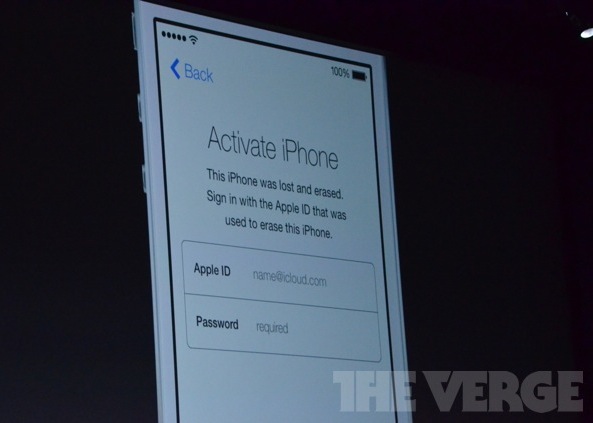
At least one critic is satisfied by Apple’s efforts to slow a growing number of iPhone crimes. San Francisco’s District Attorney, who earlier called on the iPhone maker to install a so-called kill switch in its handsets, now believes a feature in the company’s upcoming iOS 7 shows “clear improvements” by the tech giant.
San Francisco District Attorney George Gascón made the comment Friday after testing Apple’s Activation Lock feature alongside the Absolute Software’s Lojack running on Samsung’s Galaxy S4…
“I’m very optimistic that they came and were willing to share their technology with us,” Gascón told the San Francisco Examiner.
The Activation Lock feature is part of iOS 7, expected to be released in September. Unveiled in June, Activation Lock prevents a stolen iPhone from being activated unless the thief knows the owner’s AppleID.
Last week, Gascón gathered security experts to test the features included in both the Apple and Samsung handsets. At the time, the DA said the experts would “see if [the features] stand up to the tactics commonly employed by thieves.”
In June, both the San Francisco law enforcement official and New York City Attorney General Eric Schneiderman announced Save Our Smartphones (S.O.S.), an initiative aimed at protecting smartphone owners from a growing trend of theft, especially iPhones.
Around one in three thefts involve smartphones, according to the FCC.
While impressed with Apple’s efforts, the two men said they will not drop the topic until they get a response from Android maker Google and Windows Phone creator Microsoft. Both company have yet supplied anti-theft measures for tests, according to the report.
Along with the Activation Lock feature in iOS 7, Apple reportedly is expected to include a fingerprint sensor in its iPhone 5S, a handset many believe is up for introduction this Fall.
As smartphones become as commonplace as wallets and other everyday accessories, security must be a key feature for handset designers. Building in virtual kill-switches in phone software, as well as hardware which ties ownership to biometrics, should be seen as important first steps.
